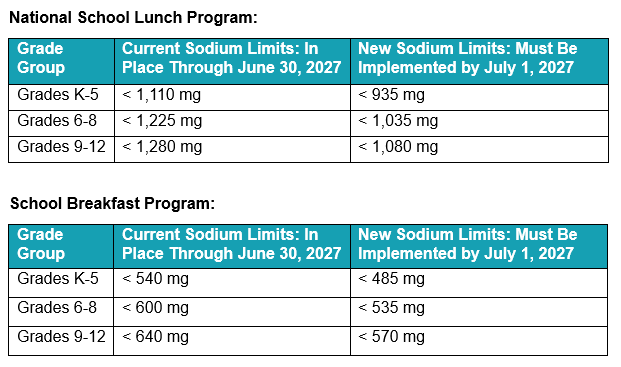
Author
Jennifer Wessel, JD, MPH
Senior Policy Analyst and Data Privacy Officer
Contact
ACHI Communications
501-526-2244
jlyon@achi.net
A new federal rule will phase in limits on added sugars and sodium in school meals, aiming to provide students access to healthier and more balanced dietary options.
The final rule, issued by the Food and Nutrition Service of the U.S. Department of Agriculture on Thursday, April 25, reflects the latest science-based recommendations on nutrition and the USDA’s Dietary Guidelines for Americans 2020-2025. Effective July 1, 2024, the rule implements changes gradually, with significant changes slated for the 2025-26 and 2027-28 school years.
Added Sugar
By the 2025-26 school year, breakfast cereals must not exceed 6 grams of added sugars per ounce. Yogurt must be under 12 grams per 6 ounces, and flavored milk must have no more than 10 grams per 8 fluid ounces or, for flavored milk sold in middle or high schools as a “competitive food” — i.e., foods and beverages that are available for sale to students on school premises that are not part of the federally reimbursable meal programs, including food and beverages sold through vending machines, student stores, or food concessions — no more than 15 grams of added sugars per 12 fluid ounces.
By the 2027-28 school year, added sugars will be limited to less than 10% of calories offered per week in school lunch and breakfast programs. For comparison, in school year 2014-15, approximately 11% of calories offered per week at lunch and 17% of calories offered per week at breakfast were from added sugars.
Whole Grains
The rule for whole grains maintains the current requirement, which is that at least 80% of the grains provided weekly must be whole grain-rich. The rule clarifies that “whole grain-rich” means the grain content of a product is between 50% and 100% whole grain, with any remaining grains being enriched.
Sodium
Schools have until the 2027-28 school year to reduce sodium by 10% for breakfast and 15% for lunch from the current limits, as detailed below:

State Standards
Established in 2003 by the Arkansas General Assembly, the Arkansas Child Health Advisory Committee (CHAC) helps develop nutrition standards for Arkansas public schools. The standards apply to foods and beverages available to students on school campuses, excluding USDA-governed reimbursable meals.
Each year, CHAC updates Arkansas’s Maximum Portion Size List for competitive foods. The current standard for milk allows schools to offer as a competitive beverage flavored or unflavored fat-free milk or unflavored low-fat milk, with portion sizes of up to 8 ounces for elementary schools and up to 12 ounces for middle and high schools. By the 2025-26 school year, flavored milk offered as a competitive beverage must adhere to the added sugars limit set by the USDA.
For a comprehensive look at the changes in the final rule, see the USDA’s comparison chart.






